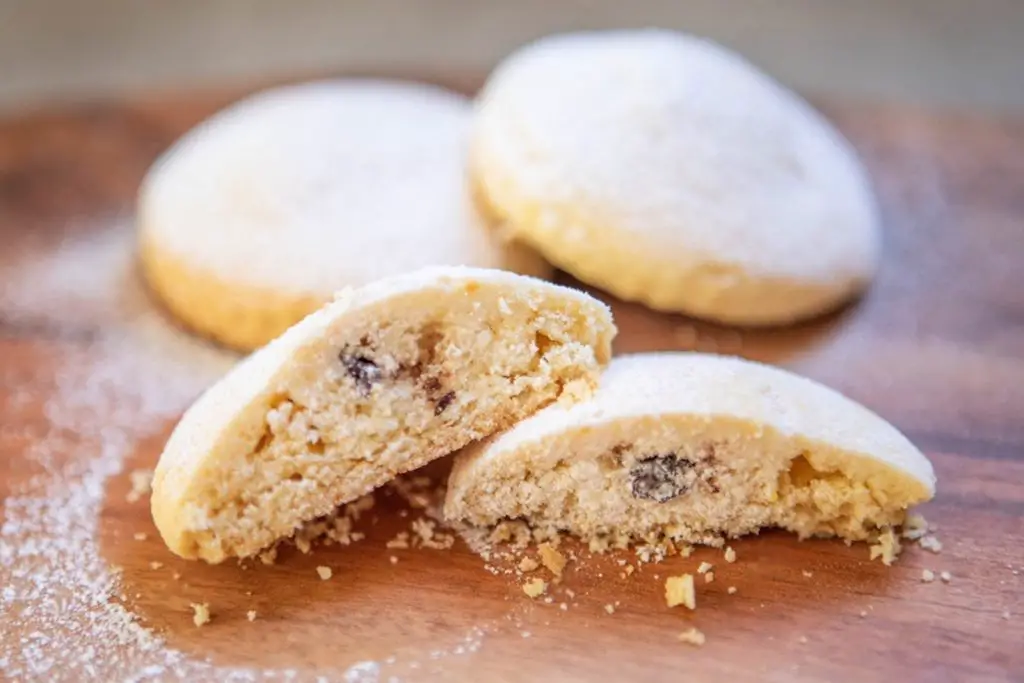
Muffins, the delightful baked treats loved by people of all ages, are a go-to option for breakfast, snacks, or even a quick on-the-go meal. These individual-sized cakes come in various flavors and varieties, from classic blueberry and chocolate chip to savory options like cornbread and cheese. Muffins are not only delicious but also incredibly convenient, especially when you have a busy schedule. To ensure you always have a fresh supply of muffins available, freezing them can be a practical solution. In this guide, we will explore the best methods for freezing muffins, allowing you to prepare a batch in advance and have a delightful treat ready to enjoy whenever you desire, without compromising on taste or texture.
Here’s a step-by-step guide on how to freeze muffins:
Step 1: Allow the muffins to cool completely
Before freezing muffins, it’s important to allow them to cool down completely. This step is essential to maintain the quality and texture of the muffins during the freezing process.
When muffins come out of the oven, they are still hot and contain residual moisture. If you attempt to freeze them while they are still warm, condensation can form inside the packaging, resulting in freezer burn. Freezer burn occurs when moisture in the food evaporates and then refreezes, causing dry, discolored patches and affecting the taste and texture of the muffins.
To prevent this, place the freshly baked muffins on a wire rack after removing them from the oven. This allows air to circulate around the muffins, helping them cool down more quickly and evenly. Leaving them on the wire rack for about an hour gives them ample time to reach room temperature.
Step 2: Determine portion sizes
When freezing muffins, it’s important to consider how you plan to consume them later. Deciding on the portion sizes before freezing allows for convenience and easy access to the desired quantity of muffins without thawing the entire batch.
If you prefer to enjoy one muffin at a time or have specific portion control requirements, it is advisable to divide the muffins into individual servings before freezing. This way, you can easily grab a single muffin whenever you crave a quick snack or breakfast on the go. It saves you the trouble of having to thaw the entire batch and ensures that the remaining muffins remain frozen and fresh until you’re ready to enjoy them.
On the other hand, if you anticipate using the muffins for a gathering, family breakfast, or any other occasion where you plan to consume multiple muffins together, you may choose to freeze the entire batch intact. Freezing them as a whole allows you to thaw and serve them all at once, ensuring that everyone can enjoy the muffins simultaneously.
Consider your preferences and needs when determining the portion sizes for freezing. Whether you opt for individual servings or freeze the entire batch, it’s about convenience and ensuring that you have the right amount of muffins readily available when you want them.
Step 3: Wrap each muffin tightly in plastic wrap
To ensure that your muffins stay fresh and maintain their texture while in the freezer, it’s essential to wrap each muffin individually with plastic wrap. This step helps protect them from freezer burn and prevents them from drying out.
Freezer burn occurs when the moisture in food evaporates and forms ice crystals on the surface. These ice crystals can cause the muffins to become dry, and tough, and develop off-flavors. By tightly wrapping each muffin in plastic wrap, you create a barrier that prevents excess moisture from escaping and protects them from the cold air in the freezer.
When wrapping the muffins, ensure that the plastic wrap covers the entire surface of each muffin. This includes the top, sides, and bottom. Make sure the wrap is tightly sealed to create an airtight environment around the muffin, reducing the risk of freezer burn.
Individual wrapping also offers the advantage of convenience. Since each muffin is wrapped separately, you can easily take out and thaw only the desired number of muffins without having to defrost the entire batch.
Should I wrap muffins individually if I plan to freeze them all together?
Yes, it is advisable to wrap muffins individually even if you plan to freeze them all together. Individual wrapping helps to maintain the quality and prevent them from sticking together. It also makes it easier to thaw and consume only the desired number of muffins without having to thaw the entire batch.
Is it necessary to remove the paper liners before freezing the muffins?
It is not necessary to remove the paper liners before freezing muffins, but it is recommended to do so. While the paper liners can help with easy removal and presentation when serving fresh muffins, they can become moist and stick to the muffin during freezing. Removing the liners before freezing allows for better airflow and prevents any potential issues with texture or taste when thawing and consuming the muffins.
Step 4: Place wrapped muffins in a freezer-safe container or bag
Once you have individually wrapped each muffin with plastic wrap, it’s crucial to transfer them to a freezer-safe container or bag. This additional layer of protection helps maintain the quality of the muffins and prevents freezer burn.
Freezer-safe containers or bags are designed to withstand the low temperatures and moisture levels in the freezer. They are typically made from materials like BPA-free plastic or glass, which are resistant to cracking or breaking under freezing conditions. Using a freezer-safe container or bag ensures that the muffins are stored in an environment that maintains their freshness and taste.
When placing the wrapped muffins in the container or bag, it’s essential to ensure it is airtight. Any exposure to air can lead to freezer burn, which can affect the texture and flavor of the muffins. An airtight seal creates a barrier against air and moisture, keeping the muffins in optimal condition.
If you’re using a plastic bag, try to remove as much air as possible before sealing it. This helps minimize the potential for freezer burn and keeps the muffins well-preserved. Alternatively, you can use a vacuum sealer to remove air completely from the bag, providing an even higher level of protection.
Step 5: Label and date the package
Before placing the wrapped muffins in the freezer, it’s important to label the container or bag with relevant information, such as the muffin’s flavor and the date of freezing. This simple step is valuable for organization and ensuring you can easily identify and track the muffins during storage.
Labeling the package with the muffin’s flavor allows you to quickly identify the type of muffin inside without having to unwrap it or rely on visual cues. It saves you time and helps you choose the muffin you’re craving without any confusion.
Additionally, dating the package is essential for tracking the storage time of the muffins. Freezing muffins can extend their shelf life, but it’s still important to consume them within a reasonable timeframe to maintain their taste and texture. By dating the package, you have a clear record of when the muffins were frozen, making it easier to keep track of their freshness.
When labeling, use a permanent marker or a label specifically designed for freezer use. Write the flavor of the muffin and the date of freezing in a clear and legible manner. Place the label on the container or bag in a visible location, making it easy to read at a glance.
Step 6: Place the wrapped muffins in the freezer
After you have properly packaged your muffins, it’s time to store them in the freezer. This final step ensures that the muffins are kept in optimal condition for an extended period.
When choosing a spot in the freezer for your muffins, look for a location where they won’t get crushed or disturbed. Avoid placing them near heavy items or in a spot where they might get bumped around. Keeping the muffins undisturbed helps maintain their shape and texture during freezing.
It’s recommended to lay the container or bag flat in the freezer. This allows for even freezing of the muffins and helps preserve their quality. By laying them flat, you also minimize the chances of any toppings or decorations getting smudged or damaged.
It’s important to leave some space around the muffins when placing them in the freezer. This allows for proper air circulation, which helps maintain consistent temperatures and prevents any potential condensation buildup. Adequate air circulation ensures that the muffins freeze evenly and stay fresh.
If you have limited space in your freezer, you can stack the containers or bags with a small gap between them. However, make sure not to stack them too high to avoid squishing the muffins or causing uneven freezing.
Other related questions
How do I thaw frozen muffins?
To thaw frozen muffins, remove them from the freezer and transfer them to a plate or a wire rack. Allow them to thaw at room temperature for about 1 to 2 hours. If you prefer warm muffins, you can reheat them in a microwave for about 20-30 seconds on a low-power setting. Alternatively, you can place the frozen muffins in a preheated oven at a low temperature (around 300°F or 150°C) for 10-15 minutes until heated through. Enjoy your thawed muffins once they are soft, moist, and ready to be savored.
How long can I keep muffins in the freezer before they start to lose their quality?
Muffins can be stored in the freezer for up to 2 to 3 months without significant loss of quality. However, it’s important to note that the longer they are frozen, the more their texture and flavor may deteriorate. To maintain the best quality, it’s recommended to consume them within the first month of freezing. Proper packaging and storage conditions, such as using airtight containers or bags and maintaining a consistent freezing temperature, can help preserve their quality for a longer duration.
Can I refreeze muffins that have been thawed previously?
It is generally not recommended to refreeze muffins that have been thawed previously. When muffins are thawed, the moisture in them begins to redistribute, potentially affecting their texture and flavor. Additionally, repeated freezing and thawing can lead to a loss of quality and result in dry or mushy muffins. If you have thawed more muffins than you can consume, it’s best to store the remaining thawed muffins in the refrigerator and consume them within a couple of days. This helps minimize the risk of foodborne illnesses and ensures better taste and texture.
How do I know if my frozen muffins have gone bad?
To determine if your frozen muffins have gone bad, there are a few signs to look out for. Firstly, check for any signs of freezer burn, such as dry or discolored patches on the muffin’s surface. Additionally, if the muffins have an off smell or taste, it indicates spoilage. Mold growth is another clear indicator that the muffins are no longer safe to consume. Lastly, if the texture of the muffins has become mushy, slimy, or excessively dry, it is a strong indication of spoilage. When in doubt, it’s always safer to discard any muffins that show signs of spoilage to avoid any potential health risks.
Can I use frozen muffins with fresh ones?
Yes, you can use frozen muffins alongside fresh ones, but there are a few things to consider. Frozen muffins may have a slightly different texture and moisture level compared to freshly baked ones. It’s best to thaw the frozen muffins to room temperature before consuming or using them in recipes. When incorporating frozen muffins into recipes, such as using them as a base for a dessert, consider adjusting the recipe’s baking time or temperature to account for the presence of frozen muffins.
Can I reheat frozen muffins in the microwave?
Yes, you can reheat frozen muffins in the microwave. To do so, place the frozen muffin on a microwave-safe plate and heat it on medium or low power for 20-30 seconds. Check the muffin’s temperature and texture, and if needed, continue microwaving in short intervals until it’s heated through. Be cautious not to overheat the muffin, as it can become dry or tough.
Can I freeze muffins that have been made with whole grains or bran?
Yes, you can freeze muffins that have been made with whole grains or bran. Whole grain and bran muffins freeze well and can be stored in the freezer following the same steps as regular muffins. Freezing helps preserve their freshness and extends their shelf life, allowing you to enjoy the nutritional benefits of whole grains and bran even after they have been baked.
Can I freeze muffins that contain nuts?
Yes, you can freeze muffins that contain nuts. Nuts can be frozen along with the muffins without any issues. Freezing helps maintain the quality and flavor of the nuts, and they will retain their crunchiness when the muffins are thawed. Just ensure that the muffins are properly wrapped and stored in airtight containers or bags to prevent any moisture or odors from affecting the nuts or the muffins.
Can I freeze muffins that have been made with alternative flours or special dietary ingredients?
Yes, you can freeze muffins that have been made with alternative flours or special dietary ingredients. Muffins made with alternative flours like almond flour, coconut flour, or gluten-free flour can be successfully frozen. Special dietary ingredient substitutes such as egg replacers or dairy-free alternatives also freeze well. Just ensure that the muffins are properly wrapped and stored in airtight containers or bags to maintain their texture and taste during freezing.








